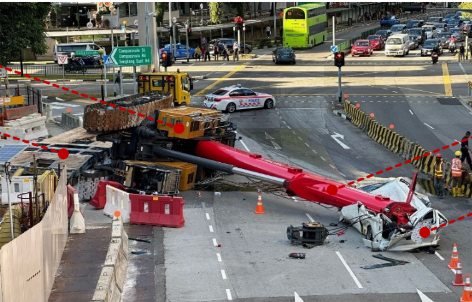On 9 April 2024, a mobile crane was being operated up a low bed trailer for transportation out of a worksite when it toppled to its side and onto the adjacent public road. The boom of the crane struck a van on the road. Fortunately, the driver of the van, its only occupant, managed to escape in time without serious injuries.
The Ministry of Manpower is investigating the accident and is also engaging stakeholders with similar operations to ensure they are conducted safely.
Loading/unloading and transportation of heavy equipment or machinery is a challenging and high-risk operation. The WSH Council would like to remind companies to plan for and conduct a WSH risk assessment before carrying out such operations.

